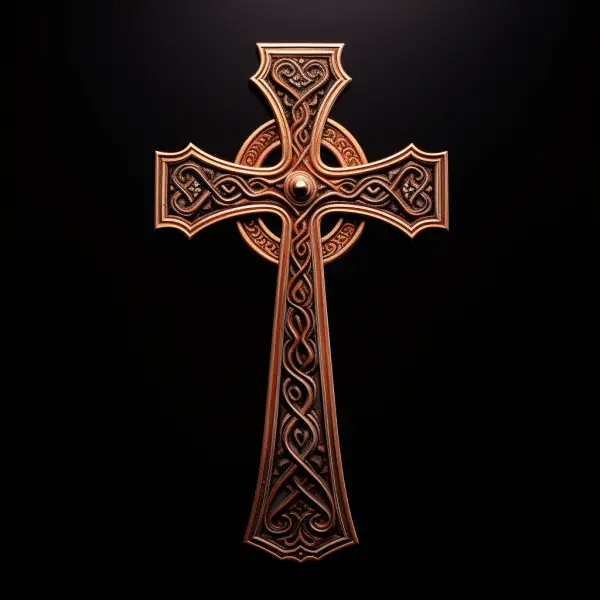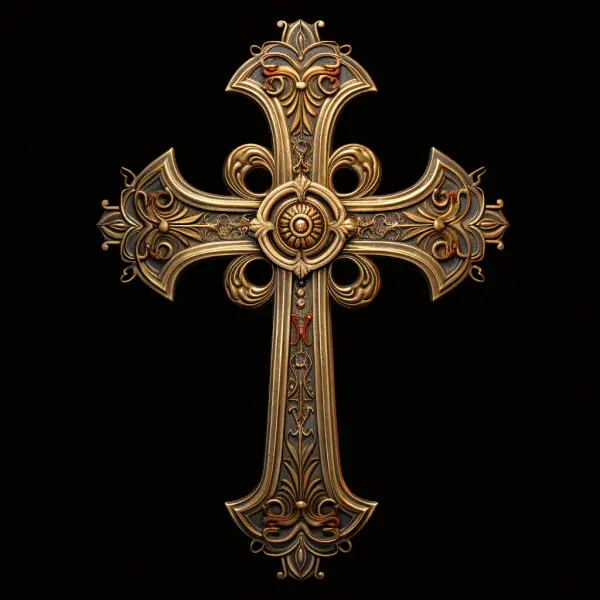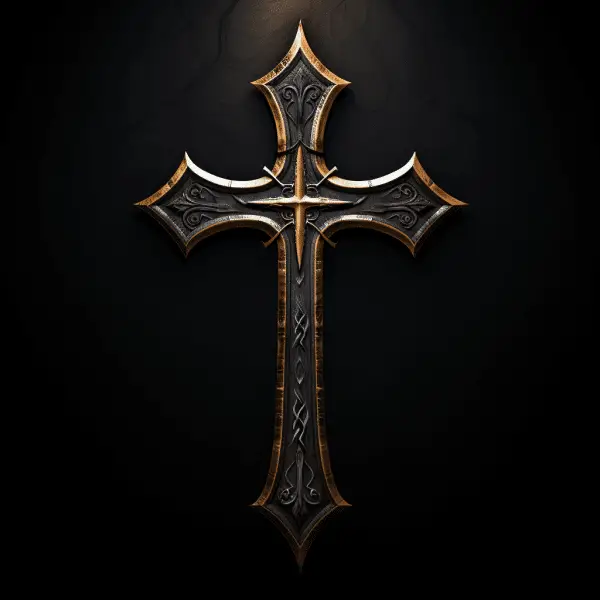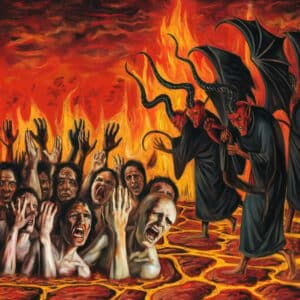

Cross symbol in Christianity The cross emblem originated in the early Christian era, with finger-forming the cross in the 3rd century. According to the New Testament, Jesus carried his cross to execution. After Emperor Constantine the Great’s rule in the 4th century, cross veneration increased. The cross still utilized to this day is also referred to as Crux mimosas. During that period, crosses and cross-shaped symbols were already familiar to pagans, and portrayals of the biblical crucifixion scene gradually emerged.
The influence of Emperor Constantine
Emperor Constantine played a momentous role in employing the cross as a symbol for Christianity. He was the first Roman Emperor to embrace Christianity after beholding a vision of a cross in the heavens, which he interpreted as a divine sign. He commanded his army to adopt the cross as an emblem on their shields during the Battle of Milvian Bridge, where he decisively vanquished his adversaries. According to the Bishop Eusebius of Caesarea, Constantine believed that the cross represented Jesus’ triumph over death. His conversion and subsequent adoption of the cross as a Christian symbol played a pivotal role in its widespread usage across the Roman Empire.
The Depiction of The Cross in Biblical Narratives
The cross assumes a prominent role in numerous biblical accounts. In the Old Testament, Moses raised a bronze serpent on a pole for the Israelites to gaze upon and be healed (Numbers 21:8-9). This foreshadowed the lifting up of the Son of Man on the cross (John 3:14-15). The crucifixion of Jesus stands as the central event of the Christian faith, with the cross serving as a symbol of his sacrificial act and ultimate triumph over death.
Convergence of Mourning Women Around the Cross
During medieval Europe, the depiction of a group of mourning women congregating around the cross became a customary tradition. This was often illustrated in depictions of the crucifixion narrative, alongside the figure of Jesus upon the cross. Notably, certain depictions of the biblical crucifixion scene from 5th-century Italy did not include the women. As time progressed, the portrayal of crosses became increasingly differentiated, with various groups of individuals arranged around the cross in diverse manners.
Crosses as Objects of Veneration
Crosses have served as religious symbols for centuries, even predating the advent of Christianity. Pagans employed crosses as objects of veneration, featuring distinct designs as a manifestation of nature worship. A research states that pre-Christian and non-Christian communities used the cross as a religious symbol universally. Egyptian symbols, especially the tau cross, were adopted by Copts.
Diverse Representations of Crosses
During the Middle Ages, the representation of crosses became increasingly diverse and intricate. The portrayals incorporated Jesus’ head inclination and increasingly diverse people around the cross. The Volcanic Calvaries showed Mary Magdalene, a group of women, and John on the left side of the Crucifix, while Longinus, Stephen, and the mockers on the right.
The Traditional Artistry of Wood Carving
The time-honored craft of wood carving has played a significant role in shaping the representation of the cross in modern times, particularly within churches and homes. Wood carving is an art that demands patience, skill, and creativity, passed down through generations. Consequently, the craftsmanship of the cross has become an exemplar of religious artistry. According to tradition, every wood-carved cross is unique and conveys its own story. “Each piece of wood is different, and you must possess the knowledge to carve it,” affirms a seasoned woodcarver.
The Cross as a Beacon of Hope
The cross has emerged as a prominent symbol of hope in Christianity, embodying the concepts of sin forgiveness and reconciliation between God and humanity. Theologians interpret the crucifixion of Jesus as a divine intervention, reestablishing the covenant between Him and humanity. The vertical axis of the cross symbolizes the divine realm, while the horizontal axis signifies earthly existence and human connection.

The Debate Surrounding State Neutrality and Religious Symbols
The utilization of religious symbols, including the cross, in public spaces has sparked intense debate. This complex discourse encompasses diverse perspectives and opinions.
The Profound Significance of the Cross in the Christian Faith
The cross holds immense significance within the Christian faith, symbolizing Jesus’ ultimate sacrifice and the redemption of humanity’s sins. However, the true profundity of the cross lies in the transformative events that unfolded during Jesus’ crucifixion. Through his death and subsequent resurrection, he triumphed over the forces of evil and conquered sin. As the apostle Paul wrote, “having forgiven us all our sins…having nailed it to the cross.”







